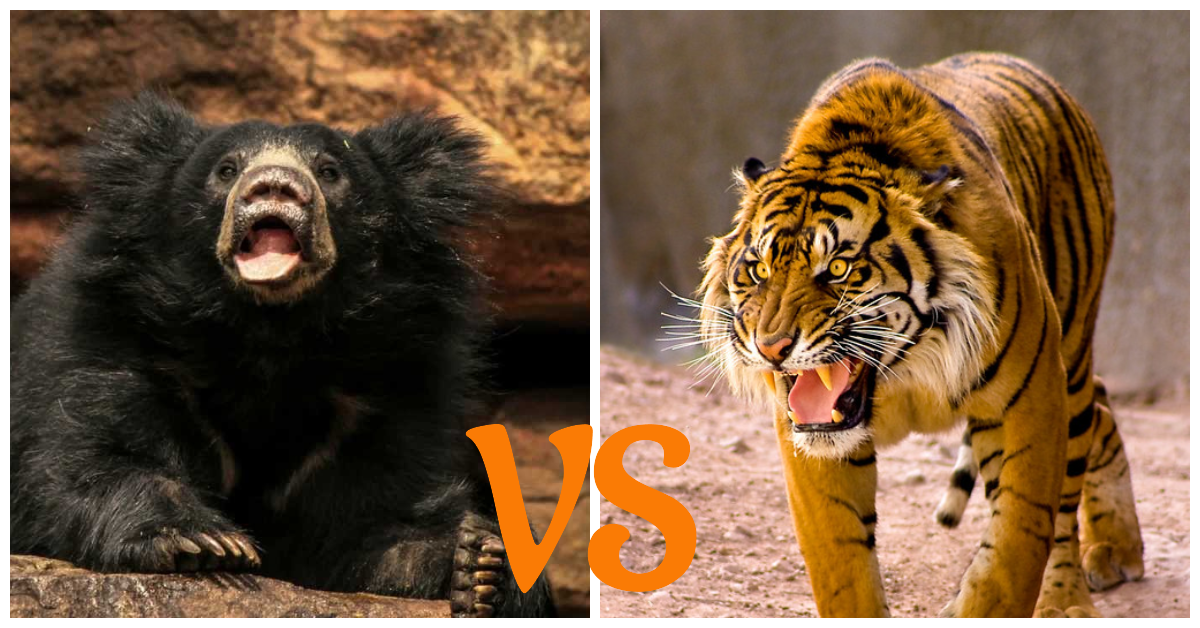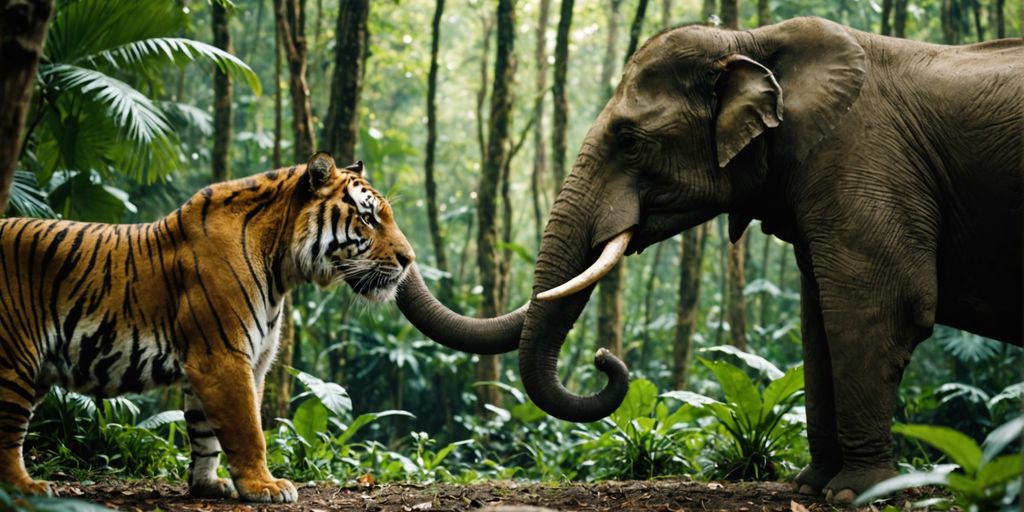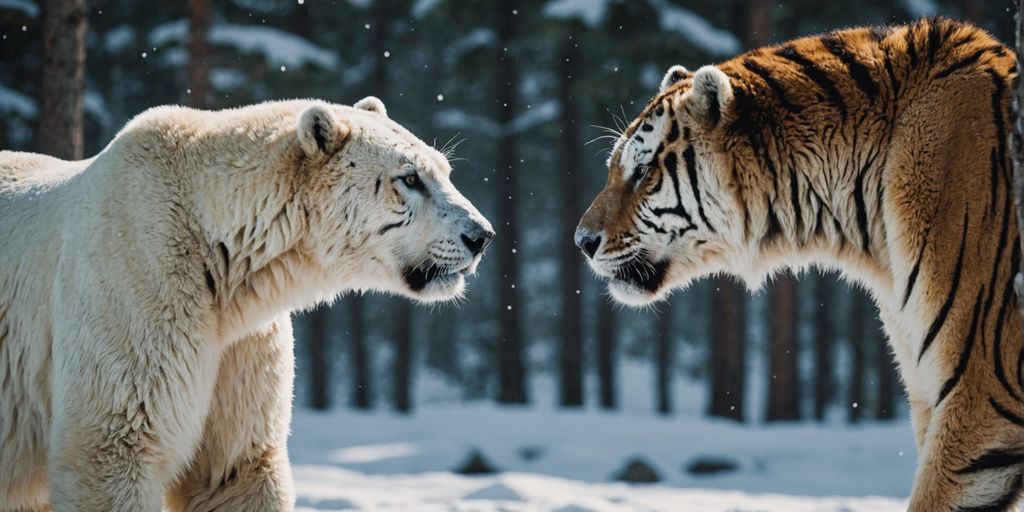Your Cart is Empty
🙏HELP US SAVE TIGERS!🐅 WE DONATE 1% OF OUR SALES TO WILDLIFE ORGANIZATIONS ( WWF ...)
Menu

🙏HELP US SAVE TIGERS!🐅 WE DONATE 1% OF OUR SALES TO WILDLIFE ORGANIZATIONS ( WWF ...)
What is a Saber Tooth Tiger?
May 28, 2021 8 min read

Do you want to know What is a Saber Tooth Tiger? The saber-toothed tiger is an extinct species of feline, characterized by its long curved canines. They go by many names such as "saber-toothed cats," "saber-toothed tigers," or simply its scientific name, the "Smilodon." Today we will discover more about these majestic prehistoric animals.
Among other feline breeds with similar large canines, the Smilodon had the lengthiest teeth. There are three known species;
- The Fatalis, the best known. Most of the time, this is the one you see everywhere.
- The Gracilis, the smallest of the three, is 1.5 meters long and 1 meter high. Small but fierce.
- The Populator is the biggest Smilodon among these three monsters. It remains much smaller than our current tigers.

Despite their name containing the word "Tiger," these large mammals were not at all related to the tiger we know today. Many thought the opposite. This justifies the article that we do to learn more about these species.
1) Description of the saber-toothed tiger
These creatures lived simultaneously as the imposing woolly mammoth (the ancestor of the elephant, just in case.). However, unlike mammoths, specialists have not found well-preserved saber-toothed tiger specimens. Although we can't say precisely what these cats looked like when they were alive, their skeletons give us some clues.
The first and foremost characteristic must be their long curved teeth. Surprisingly, these long teeth were quite fragile. They were only used to deliver the deadly bite to finish off their prey. Some paleontologists believe they were used to grab and hold onto prey. However, attacking a large herbivore in this way could easily break their long teeth. But saber teeth that were damaged during an animal's life are rare in bone deposits. We, therefore, lean more towards the first theory.
As for the rest of the body, it was also incredible. He had long forelimbs and a robust build to help him take down his prey.
2) Interesting facts about the saber-tooth tiger
Despite the notoriety of this big cat, people have many misconceptions about it. Here are some interesting facts about these prehistoric cats!
A. The predator of a prehistoric person
While we humans were hunting mastodons, another beast was also hunting us. Saber-toothed cats likely killed our prehistoric ancestors. The skull of a one-million-year-old specimen had two gaps in it, which happened to match the teeth of a saber-toothed tiger.
Are you interested in Smilodons? You might want to take a look at our beautiful Saber-Tooth Tiger Figurine.
B. Cat competition
These beasts were far from the top of the food chain. In most places, saber-toothed tigers competed with many other cat species. Some predators that competed with the Smilodon for food were the American lion, mountain lions, lynx, and Miracinonyx (or American Cheetah).
C. Large Jaws.
One of the most impressive features of the Smilodon is its pair of massive upper canines. While these molars are impressive, another feature makes them even more frightening. These beasts can open their mouths up to 120º; for comparison, lions can only open their jaws up to a maximum of 60º!
D. But less impressive
Unlike lions, these cats can't exert as much pressure when they bite. Scientists made a digital reconstruction of a skull to test how hard the saber-toothed tiger could bite. This study showed us that these felines have only a third of the biting strength of modern lions. Furthermore, they were also slightly smaller than the average lion (about 30-40cm difference). However, they were twice as heavy.

3) Saber-toothed tiger habitat
These felines were widespread and used many different types of habitats for their survival. Scientists believe that saber-toothed cats lived everywhere from savannahs to steppes, subtropical forests, woods, plains, mountains, etc. These species had different habitat preferences. Some were more common and influential than others.
A. Distribution of the saber-toothed tiger
Smilodon was found in North, Central, and South America in various species. None of the three species have been found higher than the temperate regions of North America, according to researchers. Gracilis and Fatalis both inhabited North, Central, and South America. The Populator lived only in South America. Some of these species must have lived in Europe because fossils have also been found in this area. It is not known if they lived on other continents.
4) The diet of the saber-toothed tiger
Although they were not at the top of the food chain, these large animals were not choirboys. Large hoofed mammals were their primary prey. To figure out what these cats ate, scientists mainly use two approaches. The Smilodon's hunting method was similar to that of the tiger today (ambush, sneak attack.).
First, they observed the fossils of the prey species and matched the bites of the cats. Then, they studied the isotopes preserved in the cats' bones and teeth to determine their diet. Using these methods, some of the prey that came from various places in the Americas were ancient and massive bison, prehistoric camels, peccaries, glyptodonts (a prehistoric armadillo-like animal), etc.
5) The saber-toothed tiger Vs. Human
As said before, these beasts probably killed and possibly ate humans. The presence of large predators and prey probably led to increased socialization in early humans and most likely shaped the daily lifestyle of humans.
A. Domestication
These cats were never domesticated in any way by humans.
B. Would this tiger make a good pet?
Would the saber-toothed tiger make a good pet? Even if it were still alive today, it would not be advisable to own one as a pet, just as it would not be good to have a tiger as a pet today. All three species were dangerous big cats. They were more than capable of delivering a deadly bite. Domesticated cats are still the safest thing around!
C. Care of the saber-toothed tiger
In a zoo environment, these cats would probably need similar care to other cats of their size. The smallest of the three was about the size of a jaguar, and the largest was about the size of a lion.
It's essential to choose a well-secured enclosure with plenty of room for exercise and climbing. Like all large cats, they would also need various environmental enrichments. Finally, their diet would most likely be similar to lions, modern tigers, and other modern big cats.
By the way, the widespread problem of poor tiger captivity is well explained in our blog post on Tiger Temple in Thailand.
6) Saber-toothed tiger behavior
The social nature of these cats is a hot topic of discussion. According to some hypotheses, these cats lived in packs. Since researchers found them in large numbers in the La Brea tar pits in the heart of Los Angeles, hunting calls of potential prey likely attracted them to the area.
Prey areas attract modern-day predators that hunt in groups. Finally, archaeologists have found fossils of several individuals near each other. This also suggests that they may have lived in groups.
7) Smilodon reproduction
Smilodon Fossils still provide many mysteries to scientists. One of them is unquestionably the precise methods of reproduction. The social nature of these cats is a hot topic of discussion. According to some hypotheses, these cats lived in packs.
The young fawns' adult-sized canines did not appear until they were three years old. This indicates that they depended heavily on their parents to feed and protect them when their teeth were growing and fragile. Smilodon specimens, unlike the tiger, lived in groups rather than alone, according to the researchers.
8) In Conclusion
As you have seen in this article, the current tiger and the saber-toothed tiger species were quite different. They have some points in common, like their names or their ways of hunting, but globally it stops there. Their way of life, their size, their physical characteristics, and especially their coat were quite different. Not a single stripe for the Smilodon. It is a common ancestor that it has with all the other felids of today. We hope we could give you all the information needed to understand What is a Sabertooth Cat.
Did you like this article? Don't hesitate to have a look at our other blog articles or our Tiger Figurines collection.
FAQ:
Do Saber Tooth Tigers Still Exist?
Saber Tooth Tigers, also known as Saber Toothed Cats, are extinct animals that lived during the Pleistocene epoch. While there are no longer any living Sabre Toothed Tigers, their fossils have provided valuable insight into the behavior and lifestyle of this incredible predator.
When Did Saber Tooth Tigers Go Extinct?
Saber Tooth Tigers went extinct around 10,000 years ago during the end of the Pleistocene epoch. There are many theories as to why they went extinct, including climate change, the arrival of humans, and the disappearance of their prey.
Why Are Saber Tooth Tigers Extinct?
The extinction of Saber Tooth Tigers is still a topic of debate among scientists. However, one theory suggests that the arrival of humans and the overhunting of the Saber Tooth's prey animal may have contributed to their extinction. Climate change and changes in vegetation may have also played a role.
What Is the Difference Between a Saber Tooth Tiger and a Tiger?
The main difference between a Saber Tooth Tiger and a modern-day tiger is their teeth. Saber Tooth Tigers had long, curved canine teeth that could be up to 7 inches long. These teeth were used to stab and immobilize their prey. Modern-day tigers, on the other hand, have shorter, more conical-shaped teeth.
What Is the Closest Animal to a Saber Tooth Tiger?
The closest living relative to the Saber Tooth Tiger is the Clouded Leopard. While they don't share the same distinctive teeth as Saber Tooth Tigers, they do share some similar physical features, such as short legs and a stocky build.
Why Is It Called a Saber Tooth Tiger?
The name "Saber Tooth Tiger" comes from the animal's distinctive teeth, which were long and curved like a saber.
Can a Saber Tooth Tiger Roar?
While we can't know for sure, it's likely that Saber Tooth Tigers were capable of making a range of vocalizations, including roars.
How Powerful Is a Saber Tooth Tiger?
Sabertooth Tigers were incredibly powerful predators, with strong muscles and sharp and long canine teeth. Their bites were estimated to be up to twice as powerful as those of modern-day tigers.
How Long Can a Saber Tooth Tiger Live?
It's difficult to estimate the lifespan of a Saber Tooth Tiger, as there is little fossil evidence to go on. However, it's likely that they lived to be around 10-15 years old in the wild.
How Many Saber Tooth Tigers Are Left?
There are no living Saber Tooth Tigers left, as they went extinct around 10,000 years ago.
Were Saber Tooth Tigers Alive with Dinosaurs?
No, Saber Tooth Tigers were not alive with dinosaurs. They lived during the Pleistocene epoch, which began around 2.6 million years ago, long after the extinction of the dinosaurs.
Can Saber Tooth Tigers Swim?
It's unclear whether Saber Tooth Tigers were capable of swimming. While there is no direct evidence to suggest that they were strong swimmers, it's possible that they were able to cross small bodies of water when necessary.
Which Is Bigger, a Liger or Saber Tooth Tiger?
While it's difficult to make a direct comparison, as Saber Tooth Tigers are extinct, it's believed that they were slightly larger than modern-day tigers. Ligers, which are a hybrid between a lion and a tiger, can grow to be larger than both parent species, with some individuals weighing over 900 pounds.
Is the Saber Tooth Tiger the Strongest Cat?
While Saber Tooth Tigers were incredibly powerful predators, they were not
Also in Tiger Blog

Sloth Bear vs Tiger: Who Would Win?
July 13, 2024 7 min read
Explore the thrilling showdown between a sloth bear and a tiger, analyzing their strengths, behaviors, and survival tactics.
Read More
Tiger vs Elephant: Who Reigns Supreme in the Animal Kingdom?
July 13, 2024 7 min read
Explore why elephants usually triumph over tigers in the wild, highlighting their size, strength, and defensive prowess.
Read More
Epic Battle: Polar Bear vs Tiger, who win?
July 11, 2024 8 min read
Epic showdown: Polar Bear vs Tiger. Discover who would win in this thrilling battle of nature's fiercest predators.
Read More